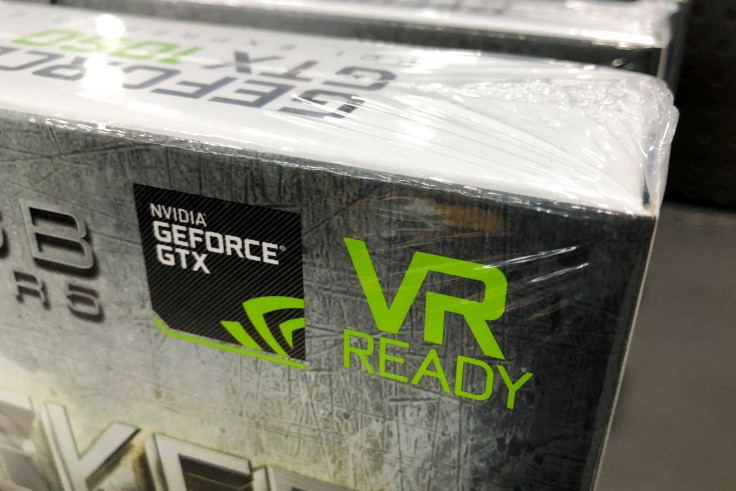Micron Technology And NVIDIA Are Sitting On Potential Gold Mine

Micron Technology (NASDAQ:MU) and NVIDIA (NASDAQ:NVDA) have been on a roll over the past few quarters. While favorable memory pricing has turned out to be a big catalyst for Micron, NVIDIA has benefited from a cryptocurrency-triggered shortage in graphics processing units (GPUs) that has led to a spike in prices.
This article originally appeared in The Motely Fool.
The success of both these high-flying stocks has largely been dependent on favorable demand-supply dynamics in their respective industries. The good part is that both NVIDIA and Micron are sitting on multiple catalysts that should help keep demand above supply going forward. These catalysts include cloud computing, self-driving cars, and increasing memory content in smartphones.
But one catalyst that hasn't been discussed much by analysts and investors is the esports market, which could prove to be a potential gold mine for both companies.
The what and why of esports
The concept of esports is nothing new, but it has evolved big time of late. For years, groups of gamers played multiplayer games such as "Call of Duty" on a casual basis. Such games are now played competitively by professional gamers and watched by spectators in an arena or on the internet, with the winner usually taking home a fat paycheck.
Simply put, competitive multiplayer PC gaming has now become a popular spectator sport. Newzoo estimates that the esports gaming economy was worth an estimated $696 million last year, and it could more than double in size to $1.5 billion by 2020 thanks to an increase in sponsorship, advertising, and media rights revenue.
The "League of Legends" World Championship had an estimated 60 million viewers last year, an increase of 40 percent from the prior year. By comparison, the NBA finals pulled in just 24.5 million viewers last year. But how are Micron and NVIDIA going to benefit from this trend?
What's in it for NVIDIA and Micron
The expanding size of the esports economy is going to positively impact demand for dedicated gaming hardware such as graphics cards. Consider this: The total prize money of the "Dota 2" tournament last year was worth more than $24 million, up from $20 million in the previous year.
This figure is going to increase as sponsors pour more money into esports. As such, gamers will be encouraged to invest in better equipment so that they can hone their skills and take a crack at the prize money.
A proper gaming setup requires 16 gigabytes of DRAM (dynamic random access memory), according to Micron's estimates, a solid-state drive (SSD) for reducing load times, as well as a powerful GPU equipped with high-speed random access memory to improve gaming performance. Digi-Capital estimates that demand for PC gaming hardware could increase from $30 billion to $35 billion this year to almost $45 billion in 2022.
This is great news for both Micron and NVIDIA, as they deal in the parts outlined above. NVIDIA, for example, controlled just over 66 percent of discrete GPUs at the end of last year, and its leading position in this space has been critical to its massive growth in recent quarters.
For instance, the company's video gaming business was up 52 percent year over year in the just-reported quarter. NVIDIA could sustain this impressive momentum thanks to esports that will encourage gamers to upgrade to better hardware. In fact, NVIDIA estimates that 35 percent of its installed user base is currently using a 2-year-old GPU architecture, which sets the stage for a strong upgrade cycle once its latest generation of Turing graphics cards, which were recently unveiled.
This is one of the reasons why research and advisory firm Gartner estimates that sales of discrete GPUs will increase from $6.9 billion last year to nearly $11 billion in 2022. Assuming that NVIDIA continues holding even 60 percent of this space five years down the line, its business will get a big shot in the arm considering that it has generated just under $11 billion in revenue over the past year.
The spike in demand for discrete GPUs will be a tailwind for Micron as well. NVIDIA was using Micron's specialty DRAM in its previous-generation graphics cards, and it is likely to tap the memory specialist once again to supply GDDR6 memory for its next-generation GPUs to provide faster performance.
This should boost Micron's DRAM business, which accounts for 71 percent of total revenue. More specifically, the company gets nearly a quarter of its DRAM revenue by supplying specialty DRAM chips that are used in verticals such as "graphics, networking, automotive, and other embedded technologies." This means that specialty DRAM accounted for approximately $1.2 billion of Micron's total revenue of $7.8 billion last quarter.
So the potential growth of the GPU market can influence around 15 percent of Micron's overall business. And that's excluding the bump in demand for other gaming-related components such as SSDs and PC DRAM, which means that esports and PC gaming could have a bigger impact on Micron's business as they are triggering a PC revival.
Driving the big picture
Industry watchers believe that gaming is playing a critical role in reviving the PC market, which grew 1.4 percent during the second quarter of 2018, marking the first rise after six years of decline as per Gartner. Looking ahead, concepts such as esports will continue boosting PC demand, leading to stronger demand for parts such as GPUs and memory. This should expand Micron's and NVIDIA's addressable markets, helping both chipmakers enjoy a favorable demand-supply dynamic.
Harsh Chauhan has no position in any of the stocks mentioned. The Motley Fool owns shares of and recommends Nvidia. The Motley Fool recommends Gartner. The Motley Fool has a disclosure policy.




















